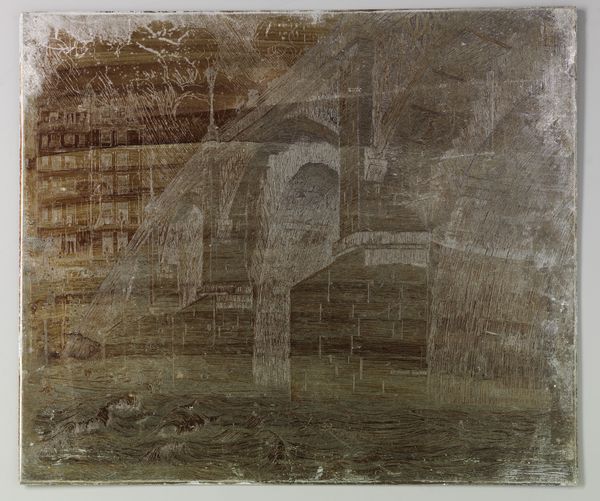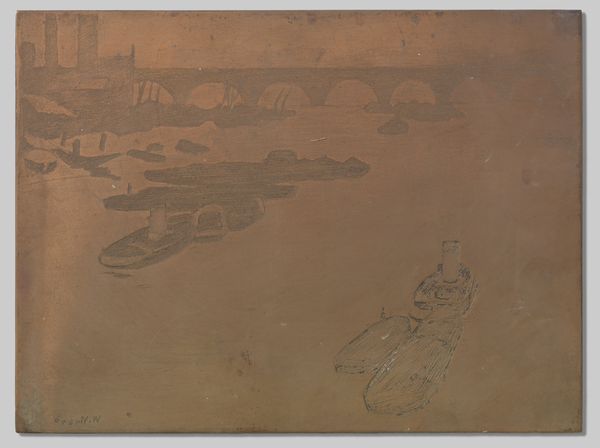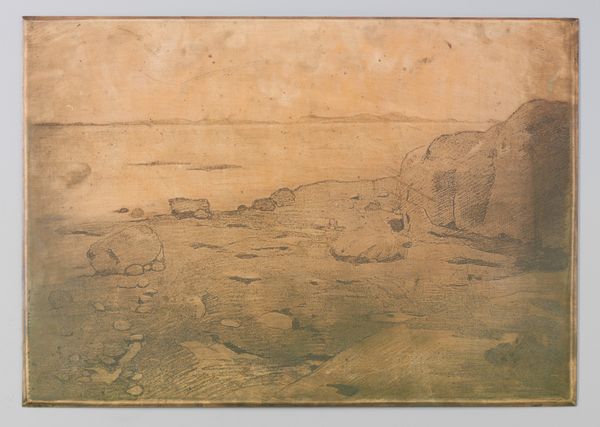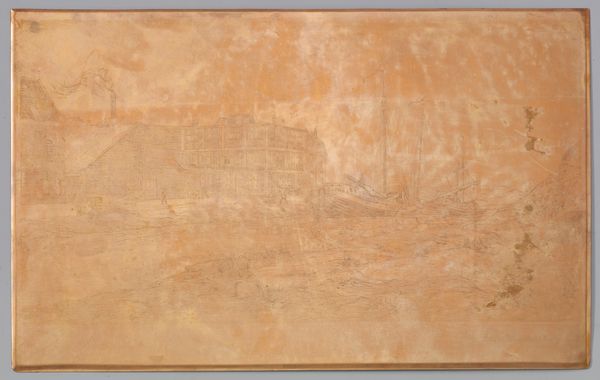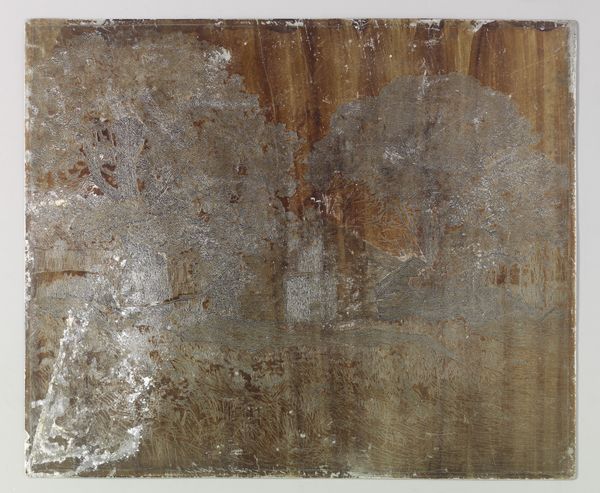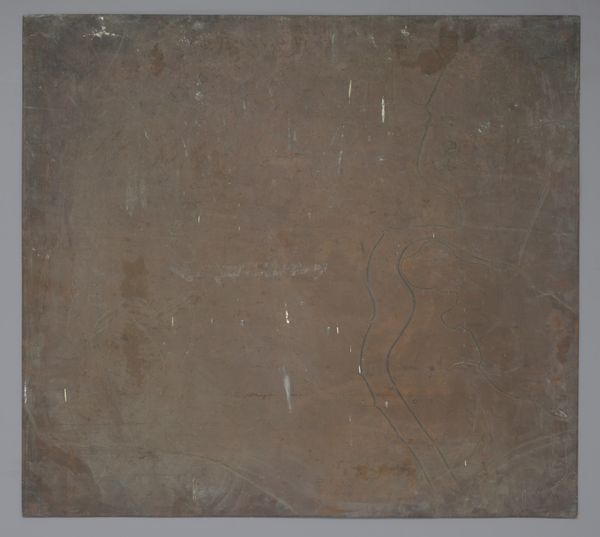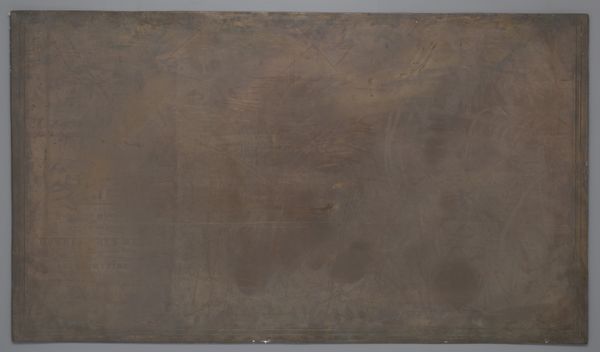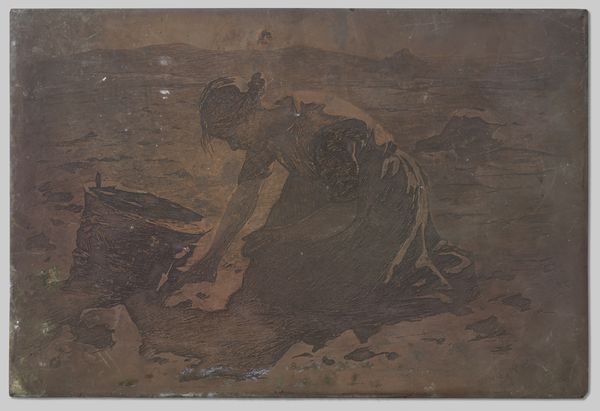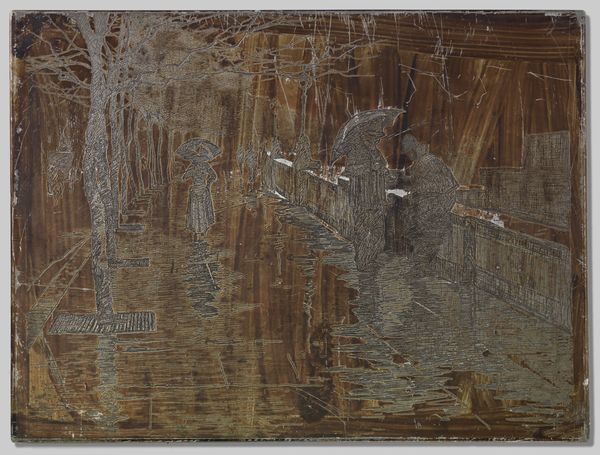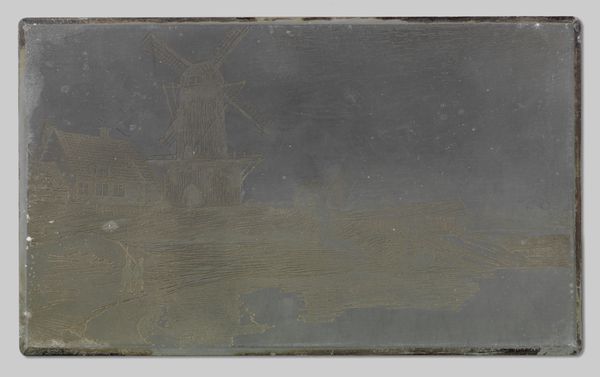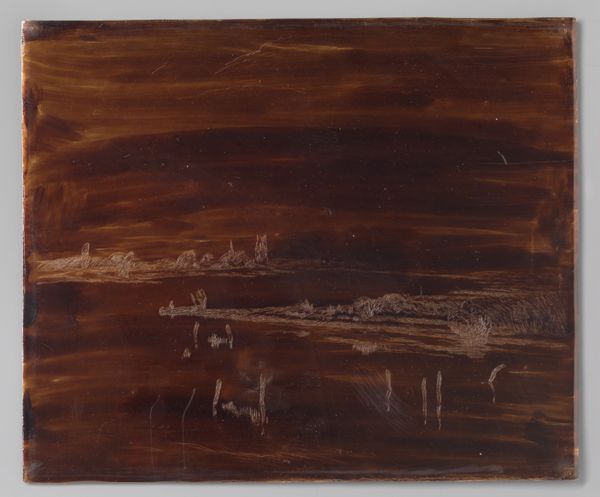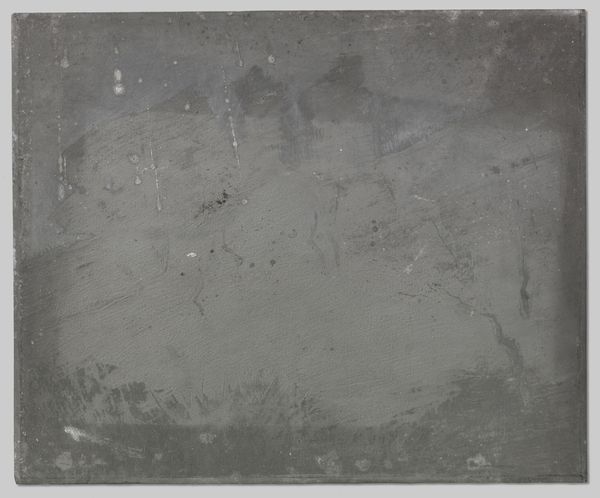
painting, watercolor
#
painting
#
impressionism
#
landscape
#
watercolor
#
cityscape
Dimensions: height 152 mm, width 204 mm
Copyright: Rijks Museum: Open Domain
Curator: Here we have Willem Witsen's "Sleepboot voor Waterloo Bridge in Londen," or "Tugboat before Waterloo Bridge in London," painted around 1890. Editor: My initial impression is one of serene melancholy. The muted colors and veiled forms evoke a hazy, dreamlike atmosphere. Curator: Indeed. Witsen captures a London shaped by its industry and infrastructure, presenting a vision that's neither celebratory nor critical, but quietly observant. London in the late 19th century was the heart of the British empire and it underwent dramatic changes from the expansion of urban centres. Editor: Formally, it's fascinating how he's handled the watercolor medium. The washes are so subtle, creating a sense of depth and atmosphere with very economical means. Note, particularly, how he renders the bridge's arches as mere suggestions rather than fully delineated forms. The subdued earth tones lend themselves to a type of flatness while it somehow still suggests receding space. Curator: Waterloo Bridge itself had already undergone an important reconstruction around this time. You're correct, he evokes the arches with mere suggestions. The work focuses our attention instead to the boats below and on the city’s work-a-day river traffic, vital to the economic activity of London. This image offers a look at a metropolis powered by coal, factories and water transit. Editor: And that smokestack on the tugboat serves as a focal point—a vertical accent breaking the horizontal expanse of the bridge and the water. Curator: Witsen occupied a key position in the Dutch art world and associated with international circles of writers and painters like Walter Sickert. His connections fostered a cosmopolitan perspective, reflecting an era when artistic exchanges across countries flourished and allowed new perspectives to circulate more freely. Editor: It’s incredible how few distinct brushstrokes create this foggy, somber, urban experience. He finds dynamism in an image mostly defined by muted colour and an interest in structure and industry. Curator: He truly does. The painting invites us to consider London as a nexus of both global industry and human-scale experience. It provides a brief moment of consideration and reflection amid its ever-changing historical trajectory. Editor: A moment of serenity amidst a burgeoning modernity—quite compelling.
Comments
No comments
Be the first to comment and join the conversation on the ultimate creative platform.

